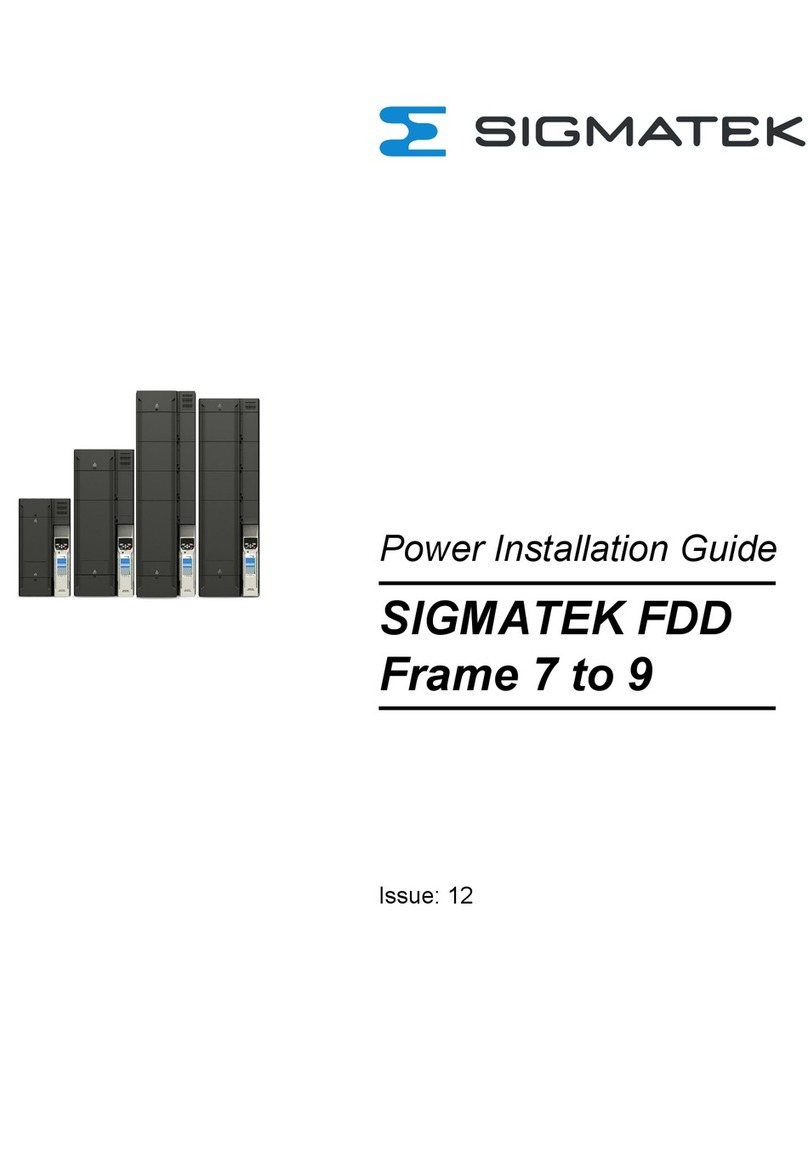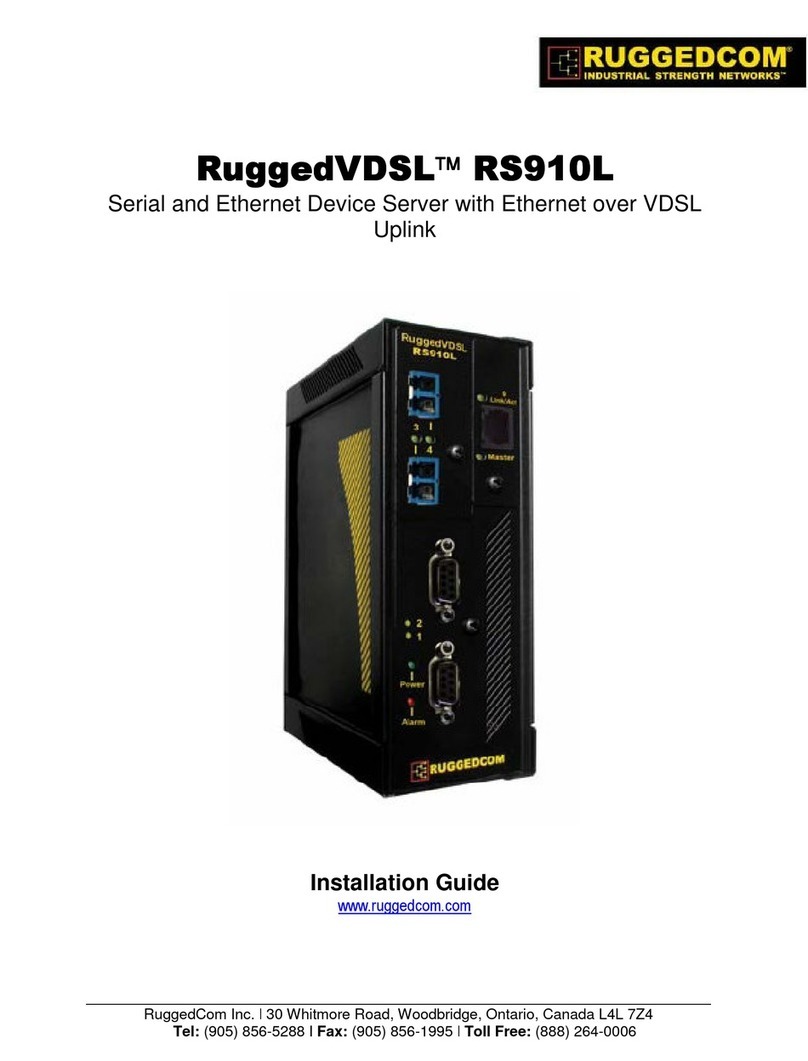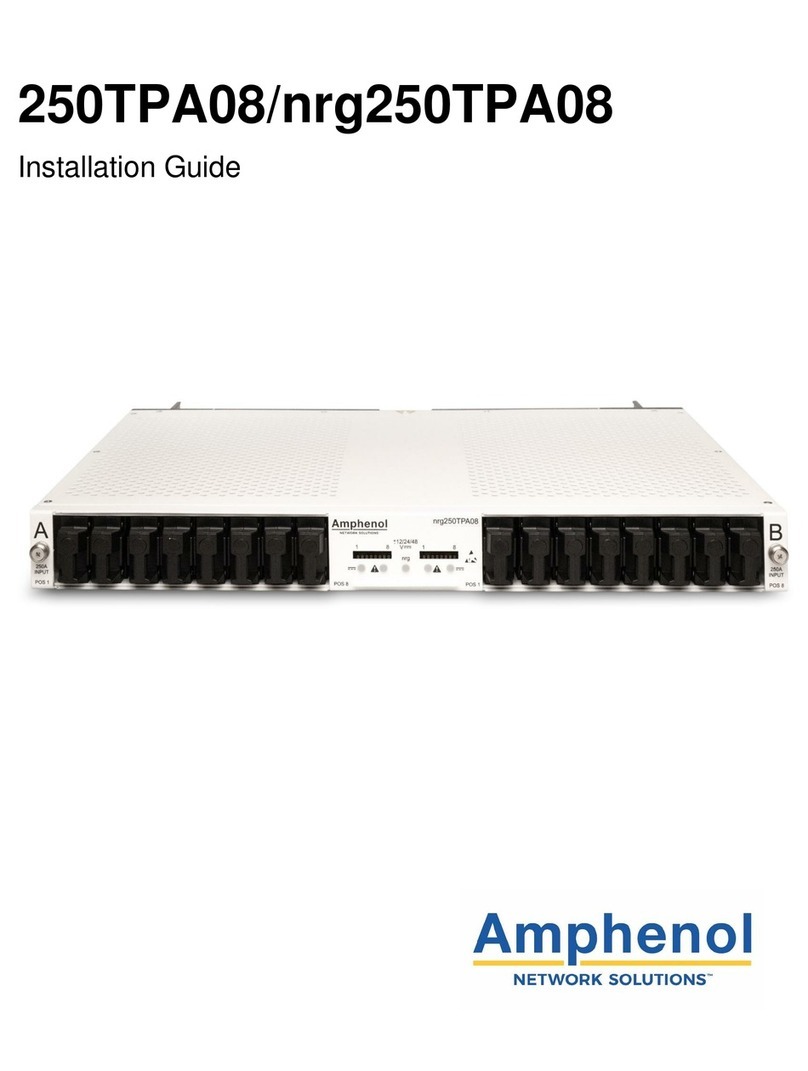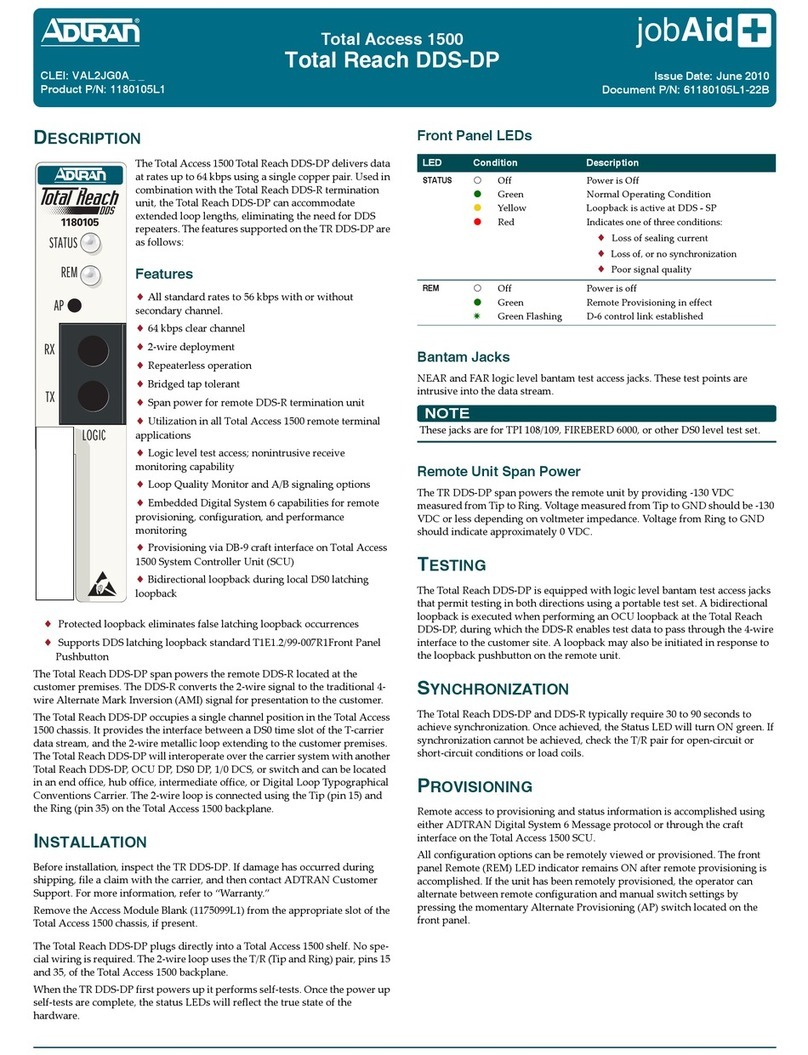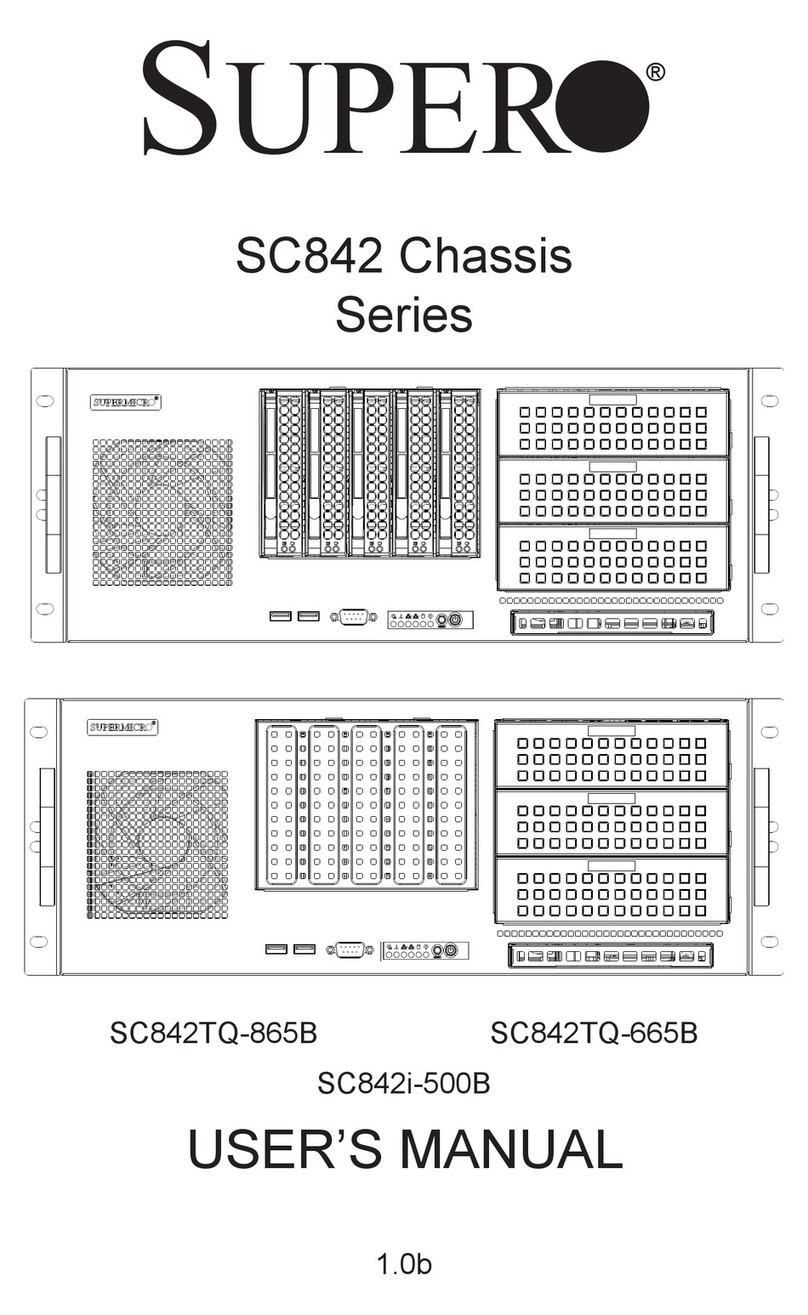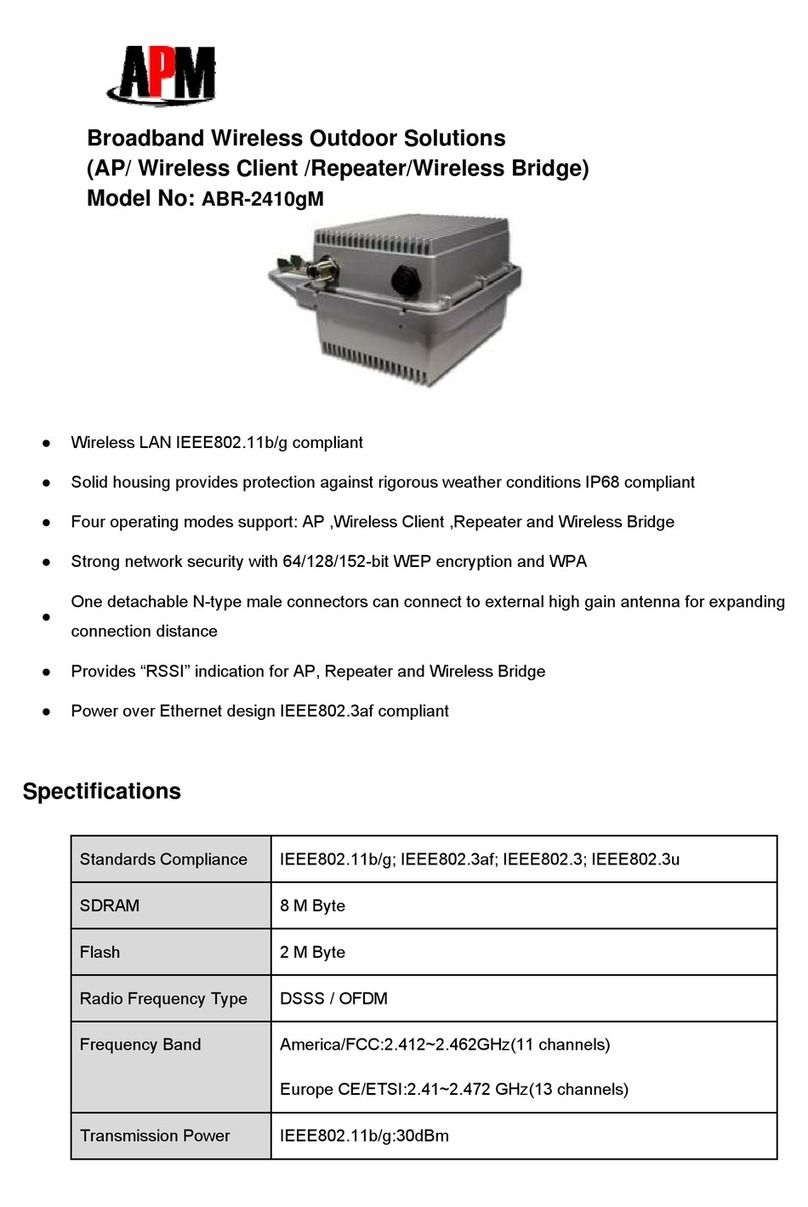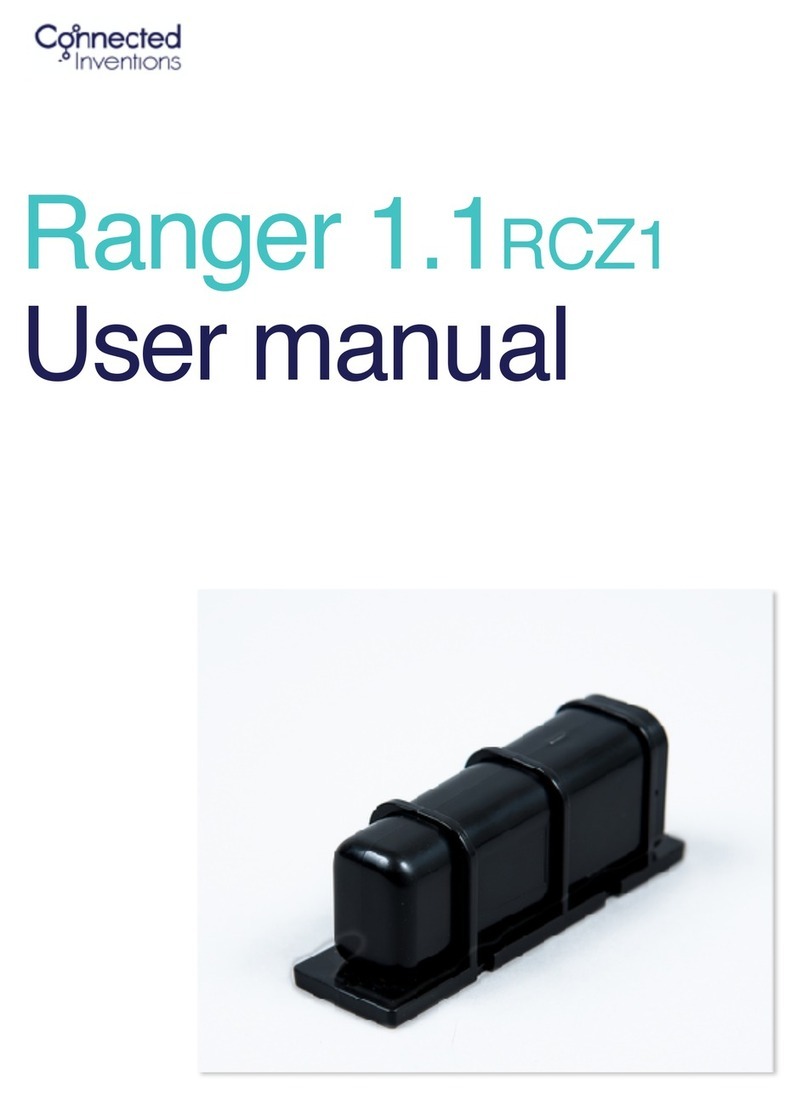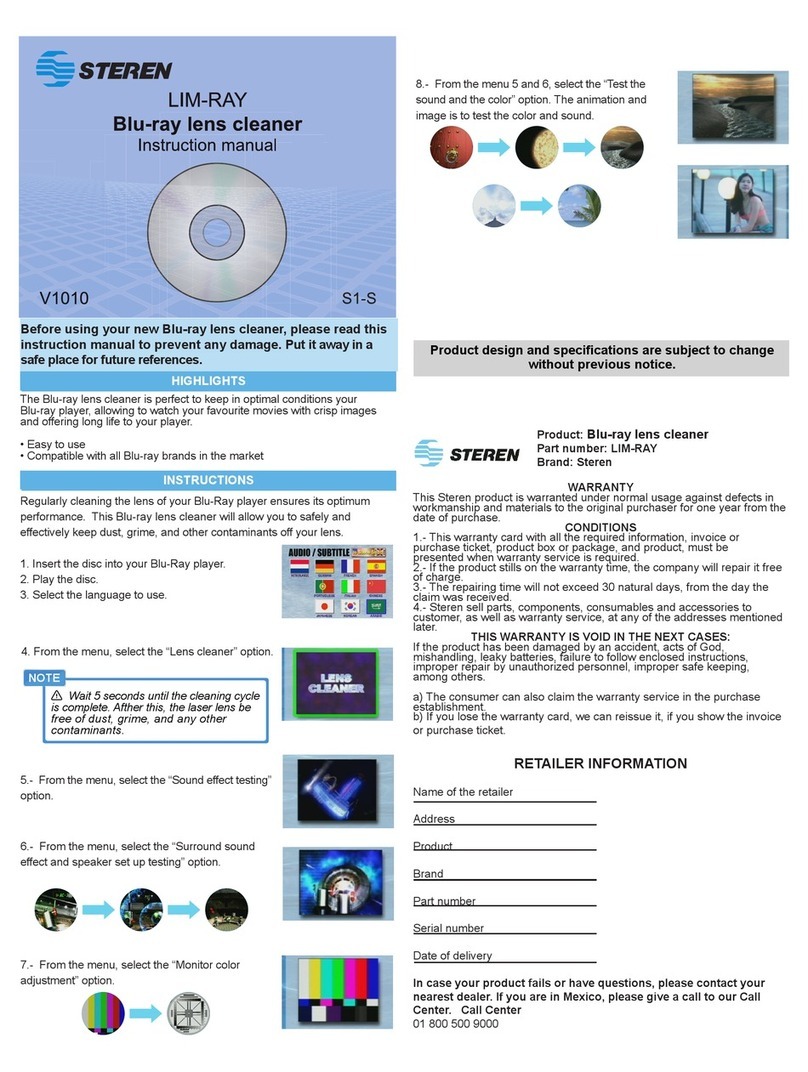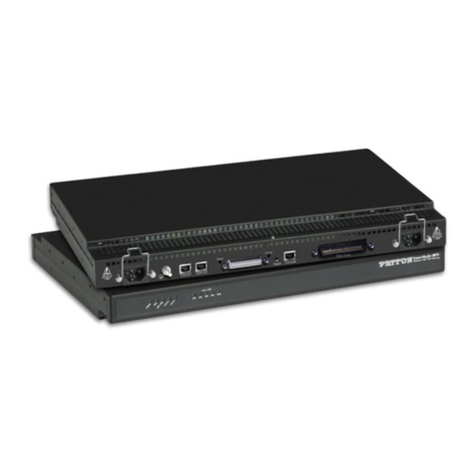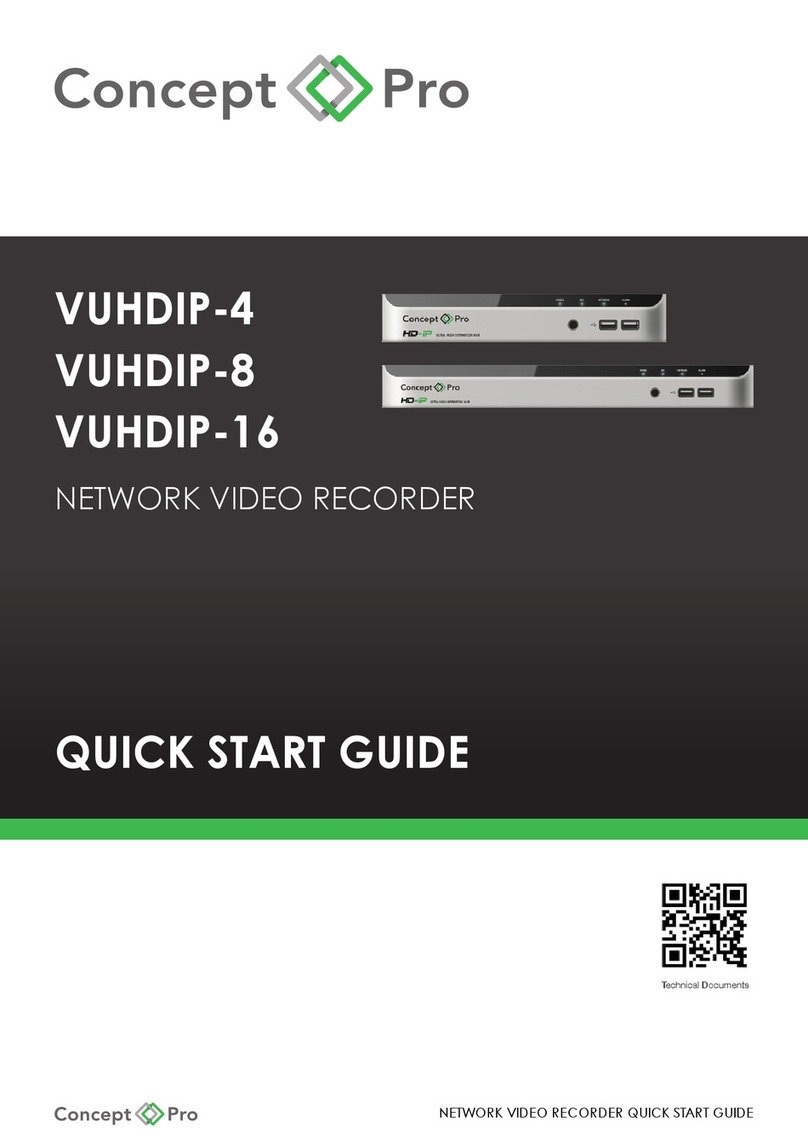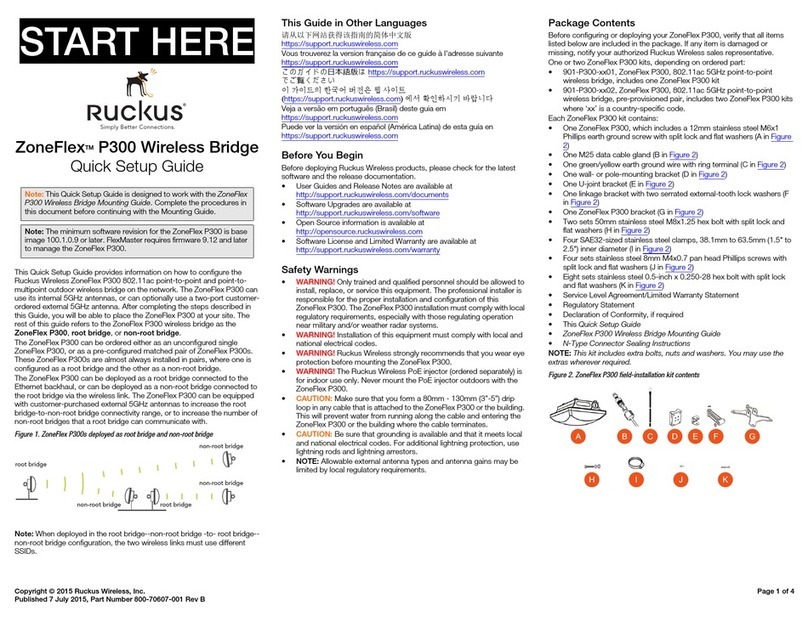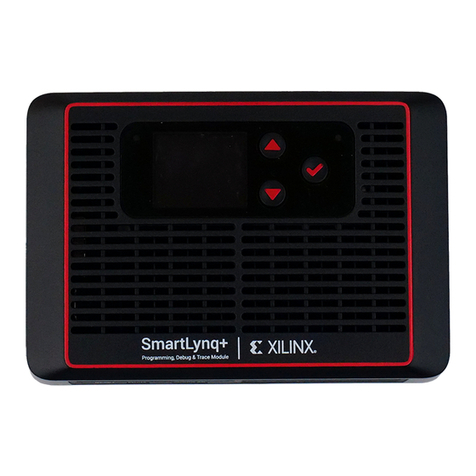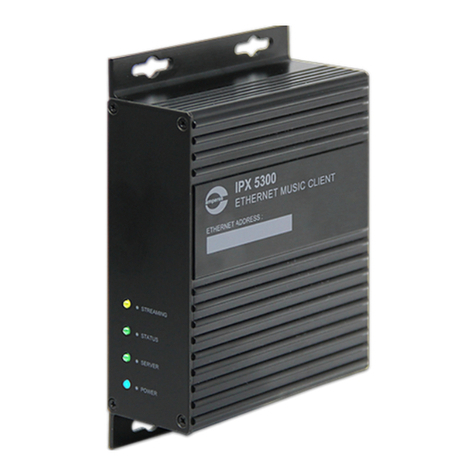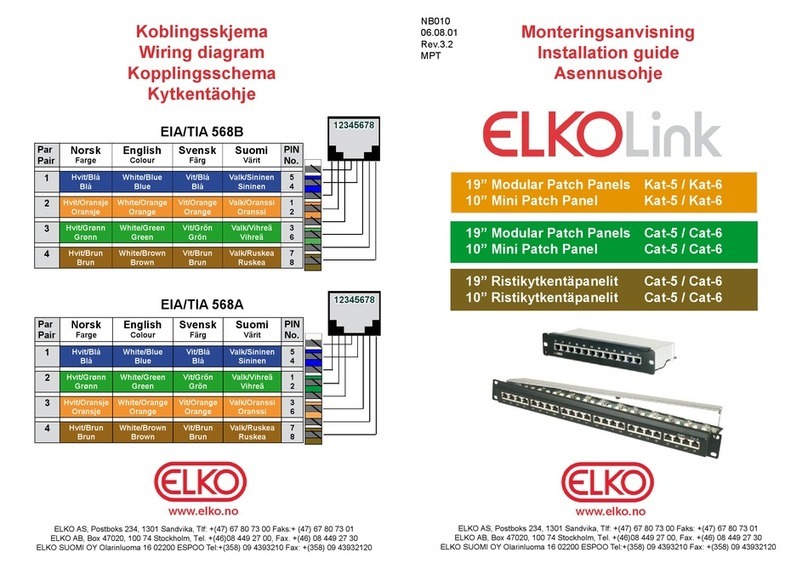Telrad BreezeAIR ACE Owner's manual

B
Br
re
ee
ez
ze
eA
AI
IR
R
I
In
ns
st
ta
al
ll
la
at
ti
io
on
n
a
an
nd
d
O
Op
pe
er
ra
at
ti
io
on
n
I
In
ns
st
tr
ru
uc
ct
ti
io
on
ns
s
September 2021
Telrad Networks Ltd.
1 Bat Sheva Street
P.O.Box 6118
Lod 7120101, ISRAEL
Tel: 844-4-TELRAD
marketing@telrad.com
The information contained in this document is of commercial value,
proprietary to Telrad Networks. It is conveyed to the recipient solely for
the purpose of evaluation. Reproduction of this document, disclosure of
its contents or any other use of the information herein is strictly
forbidden unless expressly authorized in writing by Telrad Networks.

Telrad Networks Ltd. BreezeAIR Installation Guide
Page 2 of 29
N
No
ot
ti
ic
ce
es
s
Radio Frequency Statement
BreezeAIR has been tested and found to comply with part 15 of the FCC rules and EN 301
489-1 rules. These limits are designed to provide reasonable protection against harmful
interference when the equipment is operated in a residential environment notwithstanding
use in commercial, business and industrial environments. Operation is subject to the
following two conditions:
(1) This device may not cause harmful interference, and
(2) This device must accept any interference received, including interference that may
cause undesired operation.
IMPORTANT! The device must be installed only for fixed, Point-to-Point or Point-to-
Multipoint operations per 15.247(c)(1)(iii)
IMPORTANT! It is the responsibility of the installer to ensure that when using the
outdoor antenna kits in the United States (or where FCC rules apply),
only those antennas certified with the product are used. The use of
any antenna other than those certified with the product is expressly
forbidden in accordance to FCC rules CFR47 part 15.204.
IMPORTANT! Outdoor units and antennas should be installed ONLY by experienced
installation professionals who are familiar with local building and safety
codes and, wherever applicable, are licensed by the appropriate
government regulatory authorities. Failure to do so may void the
product warranty and may expose the end user or the service provider
to legal and financial liabilities. Telrad Networks and its resellers or
distributors of this equipment are not liable for injury, damage or
violation of regulations associated with the installation of outdoor units
or antennas.
This device complies with Industry Canada license-exempt RSS standard(s). Operation is
subject to two conditions: (1) This device may not cause harmful interference, and (2) this
device must accept any interference that may be received or that may cause undesired
operation.
Le present appareil est conforme aux CNR d'Industrie Canada applicables aux appareils
radio exempts de licence. L'exploitation est autorisee aux deux conditions suivantes: (1)
l'appareil ne doit pas produire de brouillage, et (2) l'utilisateur de l'appareil doit accepter
tout brouillage radioelectrique subi, meme si le brouillage est susceptible d'en compromettre
le fonctionnement.

Telrad Networks Ltd. BreezeAIR Installation Guide
Page 3 of 29
R&TTE Declaration on Conformity
Hereby, Telrad Networks Ltd, declares that BreezeAIR is in compliance with the
essential requirements and other relevant provisions of Directive 1999/5/EC.
The declaration of conformity may be consulted through Telrad Networks Ltd.,
1 Bat Sheva Street, Lod 7120101, ISRAEL.
Compliance with European Union WEEE Directives
In January 2003, the European Union adopted an important environmental directive -- the
Directive on Waste Electrical and Electronic Equipment (WEEE). It represents an important
milestone in providing a safer environment for future generations.
The WEEE label and instructions for disposal are as follows:
Instructions for Disposal of Waste Equipment by Users in the European Union
This symbol on the product or its packaging indicates that this product
must not be disposed of with other waste. Instead, it is your responsibility
to dispose of your waste equipment by handing it over to a designated
collection point for the recycling of waste electrical and electronic
equipment. The separate collection and recycling of your waste equipment
at the time of disposal will help conserve natural resources and ensure
that it is recycled in a manner that protects human health and the
environment. For more information about where you can drop off your
waste equipment for recycling, please contact Telrad Networks.
Caution! Hot surface – Instructional safeguard
BreezeAir is designed to operates also in high temperature environment.
On such conditions, do not touch the device without taking care.
Warranty
Telrad Networks warrants that this product shall be free from defects in workmanship and
materials for a period of one year from the date of original purchase. If the product should
fail to operate correctly in normal use during the warranty period, Telrad Networks will
replace or repair it free of charge. No liability can be accepted for damage due to misuse or
circumstances outside Telrad Networks’s control. Telrad Networks will not be responsible for
any loss, damage or injury arising directly or indirectly from the use of this product. Telrad
Networks’s total liability under the terms of this warranty shall in all circumstances be
limited to the replacement value of this product.
If any difficulty is experienced in the installation or use of this product that you are unable
to resolve, please contact Telrad Networks.

Telrad Networks Ltd. BreezeAIR Installation Guide
Page 4 of 29
T
TA
AB
BL
LE
E
O
OF
F
C
CO
ON
NT
TE
EN
NT
TS
S
NOTICES................................................................................................................. 2
1. INTRODUCTION ............................................................................................. 6
1.1 BREEZEAIR APPLICATIONS ..................................................................................... 6
2. INSTALLATION .............................................................................................. 7
2.1 PACKING LIST .................................................................................................... 7
2.2 ADDITIONAL PART LIST – REQUIRED FOR INSTALLATION ................................................... 7
2.3 INSTALLATION OVERVIEW ...................................................................................... 8
2.3.1 Select the best location ................................................................................. 9
2.3.2 Mounting ................................................................................................... 10
2.3.3 Antennas ................................................................................................... 12
2.3.4 Alignment .................................................................................................. 15
2.3.5 Sealing ..................................................................................................... 16
2.3.6 Cables ...................................................................................................... 17
2.3.7 Indoor POE installation ................................................................................ 18
2.3.8 Grounding ................................................................................................. 19
2.4 CONSECUTIVE AP CONNECTION ............................................................................. 20
2.5 SYNCHRONIZATION ............................................................................................ 21
3. BREEZEAIR TECHNICAL SPECIFICATIONS .................................................... 22
4. BREEZEAIR NET THROUGHPUT (MBPS) ........................................................ 23
4.1 BREEZEAIR 8000 MIMO & SISO ......................................................................... 23
4.2 BREEZEAIR ACE .............................................................................................. 23
5. APPENDIX A – OUTDOOR CABLES SCHEME .................................................. 24
6. APPENDIX B – RF CHANNEL LISTS ............................................................... 25
6.1 BREEZEAIR 8000 FCC OPERATING BAND: 5725-5850MHZ ......................................... 25
6.2 BREEZEAIR 8000 FCC OPERATING BAND: 4940-4990MHZ ......................................... 25
6.3 BREEZEAIR 8000 FCC OPERATING BAND: 2496-2690MHZ ......................................... 26
6.4 BREEZEAIR ACE FCC OPERATING BAND: 5725-5850MHZ ........................................... 26
6.5 BREEZEAIR OPERATING BANDS IN MEXICO ............................................................... 26
7. APPENDIX C – FCC APPROVED ANTENNAS ................................................... 27
8. APPENDIX D – LIGHTNING PROTECTION ..................................................... 28
8.1 BREEZEGUARD LIGHTNING PROTECTION.................................................................... 29

Telrad Networks Ltd. BreezeAIR Installation Guide
Page 5 of 29
T
TA
AB
BL
LE
E
O
OF
F
F
FI
IG
GU
UR
RE
ES
S
Figure 1-1: BreezeAIR PTMP (blue) and PTP (red) .......................................................... 6
Figure 2-1: General System View ................................................................................. 7
Figure 2-2: BreezeAIR - General Installation Scheme ...................................................... 8
Figure 2-3: BreezeAIR basic mounting kit .................................................................... 10
Figure 2-4: BreezeAIR advanced mounting kit ............................................................. 11
Figure 2-5: Cable preparation for Outdoor Unit ........................................................... 17
Figure 2-6: Cable connection to Outdoor Unit ............................................................. 17
Figure 2-7: BreezeAIR PoE ....................................................................................... 18
Figure 2-8: Ground Connection to Outdoor Unit ........................................................... 19
Figure 2-9: Consecutive link principle ......................................................................... 20
Figure 2-10: External time synchronization ................................................................. 21
Figure 2-11: Internal time synchronization .................................................................. 21
Figure 4-1: BreezeAIR 8000 MIMO & SISO net capacity ................................................ 23
Figure 4-2: BreezeAIR ACE net capacity ...................................................................... 23
Figure 5-1: Outdoor Cables Scheme ........................................................................... 24
Figure 6-1: BreezeAIR 8000 FCC 5GHz RF channel List ................................................. 25
Figure 6-2: BreezeAIR ACE FCC 5GHz RF channel List ................................................... 26
Figure 7-1: BreezeAIR 5GHz integrated/external antennas ............................................ 27
Figure 7-2: BreezeAIR 2.5GHz integrated/external antennas ......................................... 27
Figure 8-1: Lightning protection scheme ..................................................................... 28
Figure 8-2: BreezeGuard ports ................................................................................... 29

Telrad Networks Ltd. BreezeAIR Installation Guide
Page 6 of 29
1
1.
.
I
In
nt
tr
ro
od
du
uc
ct
ti
io
on
n
Thank you for purchasing BreezeAIR solution. Telrad Networks's BreezeAIR series is a
carrier-grade point-to-point and Point-to-multipoint broadband wireless solution that sets a
benchmark of unrivaled performance, reliability, capacity, latency and RF robustness,
making it the ultimate choice for future-proof wireless system.
1
1.
.1
1
B
Br
re
ee
ez
ze
eA
AI
IR
R
a
ap
pp
pl
li
ic
ca
at
ti
io
on
ns
s
Point-to-Point (PTP):
The basic subsystem is composed of a Master Unit (MU) and a Slave Unit (SU).
Typical applications:
IP data backhaul of:
o WiMAX/LTE operators
o Metro WiFi Networks
o Cellular and 3G
Video surveillance networks
Multi-hop solutions
Point-to-Multipoint (PTMP):
The basic subsystem is composed of one Master Unit (MU) and multiple Slave Units (SUs).
Typical applications:
Multiple backhauls solutions
IP video surveillance and security networks
Business grade wireless access
Backbone for Metro WiFi Networks
High bandwidth campus solutions
Figure 1-1: BreezeAIR PTMP (blue) and PTP (red)

Telrad Networks Ltd. BreezeAIR Installation Guide
Page 7 of 29
2
2.
.
I
In
ns
st
ta
al
ll
la
at
ti
io
on
n
2
2.
.1
1
P
Pa
ac
ck
ki
in
ng
g
l
li
is
st
t
When you first open the package, verify that the unit is complete with the following
components:
1. Outdoor Unit – BreezeAIR MU or SU.
2. Indoor PoE power supply.
3. Pole mounting kit (will not be added for units that require advanced mounting kit).
Figure 2-1: General System View
2
2.
.2
2
A
Ad
dd
di
it
ti
io
on
na
al
l
p
pa
ar
rt
t
l
li
is
st
t
–
–
r
re
eq
qu
ui
ir
re
ed
d
f
fo
or
r
i
in
ns
st
ta
al
ll
la
at
ti
io
on
n
Outdoor Unit grounding cable
Outdoor-to-Indoor shielded CAT5 cable (up to 100 meters).
Indoor CAT5 cable.
RJ-45 - Installation KIT.
RJ-45 - Crimping tool.
Adjustable wrench + screwdriver.
1
3
2

Telrad Networks Ltd. BreezeAIR Installation Guide
Page 8 of 29
2
2.
.3
3
I
In
ns
st
ta
al
ll
la
at
ti
io
on
n
o
ov
ve
er
rv
vi
ie
ew
w
This section provides installation information for BreezeAIR system.
Note: Outdoor units and antennas should be installed ONLY by experienced installation
professionals who are familiar with local building and safety codes and, wherever
applicable, are licensed by the appropriate government regulatory authorities.
Failure to do so may void the product warranty and may expose the end user or
the service provider to legal and financial liabilities. Telrad Networks and its
resellers or distributors of this equipment are not liable for injury, damage or
violation of regulations associated with the installation of outdoor units or
antennas.
Typical installation scheme:
Figure 2-2: BreezeAIR - General Installation Scheme
Installation process summary:
1) Select the appropriate location for the Outdoor unit and the indoor PoE Outlet.
2) Mount the Outdoor unit (RJ-45 ports facing down). When using external antenna,
mount the antenna and connect it to the Outdoor unit.
3) Connect a ground cable between the Outdoor unit and an appropriate grounding
point.

Telrad Networks Ltd. BreezeAIR Installation Guide
Page 9 of 29
4) Connect the Outdoor-to-Indoor shielded CAT5 cable to the Outdoor unit and route it
to the selected location of the PoE. Assemble the enclosed connector on the cable.
5) Mount the Indoor POE and connect:
Outdoor-to-Indoor cable to the ‘PWR LAN-OUT’ port.
CAT5 Ethernet cable (from network) to the ‘LAN-IN’ port.
AC Input to the power (100-240VAC).
6) Align the antenna and secure the unit by fastening the mounting screws.
2
2.
.3
3.
.1
1
S
Se
el
le
ec
ct
t
t
th
he
e
b
be
es
st
t
l
lo
oc
ca
at
ti
io
on
n
Select the best location for the outdoor unit using the following guidelines:
The outdoor unit can be pole or wall mounted.
The location should allow easy access to the unit for installation.
When using an external antenna, the unit should be installed as near as possible to
the antenna.
Make sure clear Line of Sight between the sites.
Path of clearest propagation
A propagation path is the path that signals traverse between the antennas of any two
bridges. The “line” between two antenna sites is an imaginary straight line, which may be
drawn between the two antennas. Any obstacles in the path of the “line” degrade the
propagation path. The best propagation path is, therefore, a clear line of sight with good
clearance between the “line” and any physical obstacle.
Physical obstacles
Any physical object in the path between MU and SU may cause signal attenuation.
Common obstructions are buildings, trees and hills located in the path between the two
sites. Install outdoor antennas high enough to avoid any obstacles, which may block the
signal.
Minimal path loss
Path loss is determined by several factors:
Distance between sites – Path loss is lower when distance between sites is
shorter.
Clearance – Path loss is minimized when there is a clear line of sight. The number,
location, and size of obstacles determine their contribution to path loss.
Antenna height – Path loss is lower when antennas are positioned higher. Antenna
height is the distance from the imaginary line connecting the antennas at the two
sites to “ground” level. “Ground” level in an open area is the actual ground. In dense
urban areas, “ground” level is the average height of the buildings between the
antenna sites.
Minimizing path loss maximizes link’s signal strength, throughput and availability.

Telrad Networks Ltd. BreezeAIR Installation Guide
Page 10 of 29
2
2.
.3
3.
.2
2
M
Mo
ou
un
nt
ti
in
ng
g
Note: A distance of at least 250cm between the equipment and all persons should
be maintained during the operation of the equipment.
Une distance d'au moins 250cm entre l'équipement et toutes les personnes
devraient être maintenues pendant le fonctionnement de l'équipement
2
2.
.3
3.
.2
2.
.1
1
B
Ba
as
si
ic
c
m
mo
ou
un
nt
ti
in
ng
g
k
ki
it
t
BreezeAIR basic mounting kit features:
Azimuth Adjustable Mount
Suitable for pole mounting 1-2"
Made of galvanized steel
Heavy duty
Packing list
Item Qty Description
1 1 Mounting Bracket 1.25”
2 2 Spring Lock Washer 5/16”
3 2 Plain Washer 5/16”
4 2 Hex Nut 5/16”
5 2 Hex Cap Screw 5/16-18 x 2"
Basic mounting kit installation
• Place the bracket on the pole, as illustrated in the picture
• Attach the bracket to the radio’s enclosure using the screws and washers.
Note: The depth of the enclosure’s threads is about 1cm. Do not use excessive force
when tightening the screws. you may damage the enclosure.
• In case of narrow pole, the screws might be too long. In such case, use the Hex Nuts
prior to securing the screws into the enclosure.
Figure 2-3: BreezeAIR basic mounting kit

Telrad Networks Ltd. BreezeAIR Installation Guide
Page 11 of 29
2
2.
.3
3.
.2
2.
.2
2
A
Ad
dv
va
an
nc
ce
ed
d
m
mo
ou
un
nt
ti
in
ng
g
k
ki
it
t
BreezeAIR advanced mounting kit features:
Azimuth and Elevation Adjustable Mount
Suitable for pole or wall mounting
Made of Die Cast Aluminum
Heavy duty
Packing list
Item Qty Description
1 1 MK1 (End Mounting Member)
2 1 MK2 (Middle Mounting Member)
3 1 MK3 (base Member)
4 1 MK4 (Back Member)
5 1 Pole 1"-4" (not supplied)
6 6 Helical Spring Lock Washer 5/16
7 6 Plain Washer 5/16
8 4 Hex Cap Screw 5/16-18 x 1"
9 2 Hex Cap Screw 5/16-18 x 5"
Figure 2-4: BreezeAIR advanced mounting kit
Advanced mounting kit installation
• Place MK1 (1) on the unit, as illustrated in the picture. Align the holes with the screw
studs.
• Connect MK1 (1) to the unit with spring washers (6), plain washers (7) and screws
(8). Tighten the screws at a torque of 30 Lbs·In.
• Connect MK2 (2) to MK1 (1) with spring washer (6), plain washer (7) and screw (8).
Leave the screw slightly loose.
• Connect MK3 (3) to MK1 (2) with spring washer (6), plain washer (7) and screw (8).
Leave the screw slightly loose.
• Attach MK3 (3) and MK4 (4) to the pole (5) as illustrated, and connect them using
spring washers (6), plain washers (7) and screws (9). Close screws (9) together (in
turns), up to tightening torque of 30 Lbs·In.
• Distance between ends of MK3 (3) and MK4 (4) on both sides must be equal. No
skewness is allowed.
• Adjust the desired angle, and fully tighten the loose screws (of MK2) at a torque of
30 Lbs·In.
1
2
3
4
5

Telrad Networks Ltd. BreezeAIR Installation Guide
Page 12 of 29
2
2.
.3
3.
.3
3
A
An
nt
te
en
nn
na
as
s
2
2.
.3
3.
.3
3.
.1
1
G
Ge
en
ne
er
ra
al
l
BreezeAIR system supports two types of antennas:
Integrated antenna
External antenna
Selecting the antenna model is according to the required range and performance.
Note: To comply with the regulation EIRP limits, the outdoor unit-transmit power
needs to be adjusted according to the installed antenna gain. Therefore a
professional installation of the transmitter is required. The outdoor unit must
be configured at the time of installation by qualified personnel. Fail to
comply with regulation rules may expose the installer to legal liabilities.
IMPORTANT! On lab/office tests of links with external antennas, connection should
be done via the antennas. In case direct connection is required (with
RF cables), make sure to have a minimum of 50dB attenuation on the
RF cables to avoid any damage to the radios.
2
2.
.3
3.
.3
3.
.2
2
T
Tx
x
p
po
ow
we
er
r
The outdoor unit transmit power is configurable. The unit limits the max transmit power
according to the antenna gain, the regulation and the frequency band. The installer, if
needed, can select a lower power.
Regulation of the unit defines the frequency band supported by the units:
FCC: 2.5GHz, 4.9GHz, 5.8 GHz.
ETSI: 3.x GHz, 5.4 GHz and 5.8 GHz.
Mexico: 4.95-4.99 GHz, 5.15-5.35 GHz, 5.8 GHz and 10GHz.
Other regulation.
The unit supports two levels of privilege password: regular user and administrator user.
Since Tx power level affect compliance of the unit with regulation rules, precautions are
built into the system to keep the end user from adjusting the Tx power level above the
regulation limits. Therefore, the following parameters are Configurable only by administrator
user:
Antenna gain and cable loss.
Tx Power.
Please refer to BreezeAIR_configuration_manual.pdf for more information.

Telrad Networks Ltd. BreezeAIR Installation Guide
Page 13 of 29
FCC - 5.8 GHz
IMPORTANT! Antennas must be selected from a list of Telrad Networks approved
antennas. Please refer to Appendix C – FCC approved antennas. It is
the responsibility of the installer to ensure that when using the
outdoor antenna kits in the United States (or where FCC rules apply),
only those antennas certified with the product are used. The use of
any antenna other than those certified with the product is expressly
forbidden in accordance to FCC rules CFR47 part 15.204.
According to FCC part 15.247(b):
(1) The maximum peak output power of intentional radiator shall not exceed 1 Watt (+30
dBm).
(3) If transmitting antennas of directional gain greater than 6 dBi are used, the peak output
power from the intentional radiator shall be reduced below the maximum peak power (of
+30 dBm) as appropriate, by the amount in dB that the directional gain of antenna exceeds
6 dBi.
That is to say that the maximum EIRP (Effective Isotropic Radiated Power) shall not exceed
+36 dBm.
(ii) Systems operating in 5.8 GHz exclusively for fixed, point-to-point operations may
employ transmitting antennas with directional gain greater than 6 dBi without any
corresponding reduction in transmitter peak output power.
That is to say that the maximum EIRP can exceed +36 dBm in point-to-point applications.
Dynamic range of Tx power in BreezeAIR is 40 dB.
In Point-to-Multipoint mode, the unit will automatically reduce the Tx power according to
the antenna gain and regulatory. For example:
For integrated antenna of 23 dBi, the max allowed Tx power is 13 dBm (10 dBm in
MIMO) to meet the EIRP limitation of 36 dBm.
For integrated antenna of 28.5 dBi, the max allowed Tx power is 7 dBm (4 dBm in
MIMO) to meet the EIRP limitation of 36 dBm.
FCC – 4.9 GHz
According to FCC part 90.1215:
(a)(1) The maximum conducted output power should not exceed:
Channel bandwidt
h
(MHz)
High power maximum conducted
output power (dBm)
5
27
10 30
20 33

Telrad Networks Ltd. BreezeAIR Installation Guide
Page 14 of 29
(2) High power point-to-point and point-to-multipoint operations (both fixed and temporary-
fixed rapid deployment) may employ transmitting antennas with directional gain up to 26
dBi without any corresponding reduction in the maximum conducted output power or
spectral density. Corresponding reduction in the maximum conducted output power and
peak power spectral density should be the amount in decibels that the directional gain of
the antenna exceeds 26 dBi.
FCC – 2.5 GHz
According to FCC 47 CFR part 27.50:
(i) The maximum EIRP of a main, booster or base station shall not exceed 33 dBW
10log(X/Y) dBW, where X is the actual channel width in MHz and Y is either 6 MHz if prior to
transition or the station is in the MBS following transition or 5.5 MHz if the station is in the
LBS and UBS following transition, except as provided in paragraph (h)(1)(ii) of this section.
As such, the following limits apply
Channel bandwidth
(MHz)
High power maximum conducted
output power (dBm)
5 62.2
10
65.2
14 66.67
20 68.2
2
2.
.3
3.
.3
3.
.3
3
A
An
nt
te
en
nn
na
a
p
po
ol
la
ar
ri
iz
za
at
ti
io
on
n
BreezeAIR transmission is polarized according to the antenna:
BreezeAIR SISO:
o Vertical
o Horizontal
BreezeAIR MIMO:
o Dual polarization (Vertical + Horizontal)
o Dual slant (+/- 45 degrees)
The MU and its SUs must be on the same polarization.
To verify antenna polarization, please refer to the assembly instructions supplied with the
antenna set.
The polarization of integrated antenna is marked on the backside:
Vertical polarization - marked with arrow pointing up or down.
Horizontal polarization - marked with arrow pointing left or right.

Telrad Networks Ltd. BreezeAIR Installation Guide
Page 15 of 29
2
2.
.3
3.
.4
4
A
Al
li
ig
gn
nm
me
en
nt
t
Power up the unit:
1. Plug the Power Supply into a wall outlet or other standard AC power source. This is
only for use prior to permanent mounting, so any available wall outlet in close
proximity to your mounting location is suitable.
2. Connect the Outdoor-to-Indoor cable to the PoE ‘PWR LAN-OUT’ port (this port
supplies 48 VDC in addition to the Ethernet data).
BreezeAIR is aligned using 2 methods:
2
2.
.3
3.
.4
4.
.1
1
U
Us
si
in
ng
g
t
th
he
e
W
WE
EB
B
i
in
nt
te
er
rf
fa
ac
ce
e
1. Connect a CAT5 Ethernet cable from a PC to the PoE ‘LAN-IN’ port.
Note: Do not attach standard CAT5 cable from the Outdoor Unit directly to the PC.
Connecting the PC directly to the Outdoor Unit may cause damaged to the PC
Ethernet NIC.
2. Connect to the radio's WEB interface, monitoring tab.
3. Set Monitoring Rate to 1 second.
4. Rotate the antenna for maximum RSSI with zero PER. To avoid saturation, make
sure the RSSI level does not exceed –25 dBm.
Note: Do not stand in front of transmitting antenna. Rotate the antenna from the
rear side.
5. Mount and secure the unit by fastening the mounting screws.
2
2.
.3
3.
.4
4.
.2
2
U
Us
si
in
ng
g
t
th
he
e
b
bu
ui
il
lt
t
i
in
n
R
RS
SS
SI
I
b
bu
uz
zz
ze
er
r
BreezeAIR units have a built in RSSI buzzer that indicates the best mounting location.
The buzzer is beeping at four tone levels:
Fast – highest signal obtained so far.
Medium – the current RSSI is lower than the highest signal obtained so far.
Slow – the current RSSI is much lower than the highest signal obtained so far.
No sound – no reception of the base station at all (or the buzzer is off).
To align the unit using the RSSI buzzer, please perform the following steps.
1. When the unit is first connected to power, the buzzer will be automatically activated
in one of the following modes:
No sound – there is no reception.
Fast beep – there is a reception (which is currently the maximum signal
obtained).
2. Set the MU at fixed modulation of BPSK ½ in both uplink and downlink.

Telrad Networks Ltd. BreezeAIR Installation Guide
Page 16 of 29
3. Take the unit to the selected location and align the antenna in the link’s direction.
Listen to the buzzer tone level. Any sound (fast, medium or slow) indicates a
reception.
4. Change and rotate the antenna to the left, right, up and down, scanning for the
maximum reception point.
5. After the scan is complete, align the antenna to the location where the buzzer beeps
at the fast rate, indicating the maximum reception.
6. Mount and secure the unit by fastening the mounting screws.
7. Set the MU back to adaptive modulation (AUTO) for both uplink and downlink.
8. Disable the RSSI buzzer.
To activate/deactivate the buzzer manually, use the Link Manager advanced window.
Note: During this procedure, do not disconnect the unit from power.
2
2.
.3
3.
.5
5
S
Se
ea
al
li
in
ng
g
The outdoor unit must be sealed against rain with the metal glands.
RJ-45 ports of the outdoor unit must be facing down.
Note: All Units are factory sealed, seal needed only on Ethernet ports. Opening the
unit will void BreezeAIR product warranty.
RJ-45 ports must be facing down. If installed to the side, the bending of the
CAT5 cable damages BreezeAIR sealing and voids product warranty.

Telrad Networks Ltd. BreezeAIR Installation Guide
Page 17 of 29
2
2.
.3
3.
.6
6
C
Ca
ab
bl
le
es
s
The outdoor unit is connected to straight CAT5 Gauge 24-shielded outdoor rated cable. The
cable should be UV resistant, flame retardant, UL listed and contain at least 4 twisted
pairs.
The outdoor cables scheme is indicated in Appendix A – Outdoor Cables Scheme.
The Indoor PoE Outlet side and Outdoor Unit side are crimped using RJ-45 tool.
Total length of the CAT5 cables must not exceed 100 meters
The Outdoor Unit side is assembled according to the following steps (figure 2-5):
Insert sealing nut on the cable.
Insert claw and rubber seal on the cable.
Crimp the RJ-45 Plug.
Figure 2-5: Cable preparation for Outdoor Unit
Insert the RJ-45 to the Outdoor Unit (Figure 2-6).
Fasten the seal nut to the gland Body
The unused port should be left sealed.
Figure 2-6: Cable connection to Outdoor Unit

Telrad Networks Ltd. BreezeAIR Installation Guide
Page 18 of 29
2
2.
.3
3.
.7
7
I
In
nd
do
oo
or
r
P
PO
OE
E
i
in
ns
st
ta
al
ll
la
at
ti
io
on
n
The indoor PoE is assembled as follows:
1. Crimp the RJ-45 Plugs on cable ends to form the Outdoor Unit cable.
2. Plug the Outdoor Unit cable to the RJ-45 Jack marked “PWR LAN-OUT”.
3. Plug standard CAT5 cable from the PC to the RJ-45 Jack marked “LAN-IN”.
4. Plug the AC Input to the power (100-240VAC).
Note: Do not attach standard CAT5 cable from the PC (or other network device) to
the Indoor Unit RJ-45 jack marked “PWR LAN-OUT”. It may damage the PC’s
Ethernet interface.
To 100-240VAC To Outdoor Unit (MU/SU) To Ethernet
Figure 2-7: BreezeAIR PoE

Telrad Networks Ltd. BreezeAIR Installation Guide
Page 19 of 29
2
2.
.3
3.
.8
8
G
Gr
ro
ou
un
nd
di
in
ng
g
2
2.
.3
3.
.8
8.
.1
1
G
Gr
ro
ou
un
nd
di
in
ng
g
t
th
he
e
o
ou
ut
td
do
oo
or
r
u
un
ni
it
t
(
(M
MU
U
/
/S
SU
U)
)
The outdoor unit shall be connected to a protective earth with not less than 10 AWG
conductors having green-yellow insulation. The following figure shows the grounding cable
from outdoor unit external screw to adjacent grounding rod. The cable should be long
enough to reach from the mounting pole to the grounding rod with 3 to 6 feet extra to allow
for strain relief.
Figure 2-8: Ground Connection to Outdoor Unit
Protection from lightning
US National Electric Department of Energy Handbook 1996 specifies that radio and
television lead-in cables must have adequate surge protection at or near the point of entry
to the building. The code specifies that any shielded cable from a detached antenna must
have the shield directly connected to a 10 AWG wire that connects to the building ground
electrode.
The ground wire shall be terminated with UL listed lug with a diameter of 0.2 inch (5.2
mm).
The ground lug will need to be suitable for terminating on aluminum materials, such as the
use of an aluminum connector and aluminum ground conductor.

Telrad Networks Ltd. BreezeAIR Installation Guide
Page 20 of 29
FCC Notice
This equipment has been tested and found to comply with the limits for Class B digital
device, pursuant to part 15 of the FCC Rules. These limits are designed to provide
reasonable protection against harmful interference in a residential installation. This
equipment generates, uses and can radiate radio frequency energy and, if not installed and
used in accordance with the instructions, may cause harmful interference to radio
communications. However, there is no guarantee that interference will not occur in
particular installation. If this equipment does cause harmful interference to radio or
television reception, which can be determined by turning the equipment off and on, the user
is encouraged to try to correct the interference by one or more of the following measures:
Reorient the relocate-receiving antenna.
Increase the separation between the equipment and receiver.
Connect the equipment into an outlet on a circuit different from that to which the
receiver is connected.
Consult the dealer or an experienced radio/TV technician for help.
This device must accept any interference received including interference that may cause
undesired operation. Any unauthorized modification or changes to this device without the
express approval of Telrad Networks may void the user’s authority to operate this device.
Furthermore, this device intended to be used only when installed in accordance with the
instructions outlined in this manual. Failure to comply with these instructions may also void
the user’s authority to operate this device and/or the manufacturer’s warranty
2
2.
.4
4
C
Co
on
ns
se
ec
cu
ut
ti
iv
ve
e
A
AP
P
c
co
on
nn
ne
ec
ct
ti
io
on
n
Consecutive connection is done by plugging CAT5 cable between SU and consecutive MU.
This cable also provides power redundancy to the units.
Total length of all wires should not exceed 100 meters.
Figure 2-9: Consecutive link principle
This manual suits for next models
2
Table of contents
Other Telrad Network Hardware manuals



